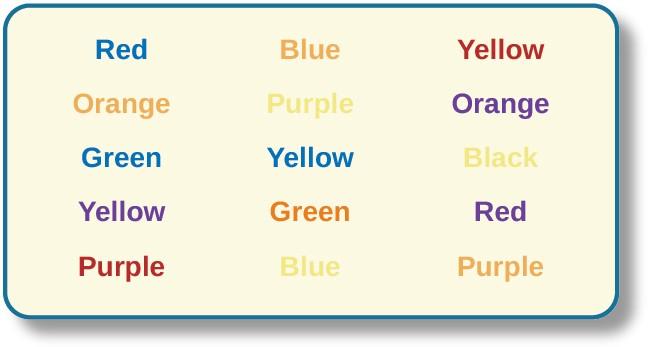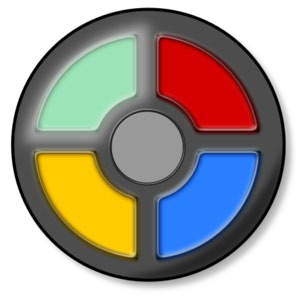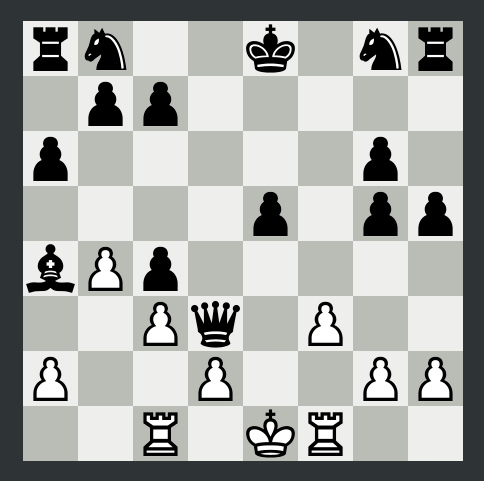6.1.6: Modal Model of Memory
- Last updated
- Save as PDF
- Page ID
- 92695

- Mehgan Andrade and Neil Walker
- College of the Canyons
The three major classifications of memory that the scientific community deals with today are as follows: sensory memory, short-term memory, and long-term memory. Information from the world around us begins to be stored by sensory memory, making it possible for this information to be accessible in the future. Short-term memory refers to the information processed by the individual in a short period of time. Working memory performs this processing. Long-term memory allows us to store information for long periods of time. This information may be retrieved consciously (explicit memory) or unconsciously (implicit memory).
Sensory Memory
“Sensory memory is the capacity for briefly retaining the large amounts of information that people encounter daily” (Siegler and Alibali, 2005). There are three types of sensory memory: echoic memory, iconic memory, and haptic memory. Iconic memory retains information that is gathered through sight, echoic memory retains information gathered through auditory stimuli and haptic memory retains data acquired through touch.
Scientific research has focused mainly on iconic memory; information on echoic and haptic memory is comparatively scarce. Iconic memory retains information from the sense of sight with an approximate duration of 1 second. This reservoir of information then passes to short- term vision memory (which is analogous, as we shall see shortly, to the visuospatial sketchpad with which working memory operates).
Di Lollo’s model (Di Lollo, 1980) is the most widely accepted model of iconic memory. Therein, he considered iconic memory a storehouse constituted by two components: the persistence of vision and information.
- Persistence of vision. Iconic memory corresponds to the pre-categorical representation image/visual. It is sensitive to physical parameters, such that it depends on retinal photoreceptors (rods and cones). It also depends on various cells in the visual system and on retinal ganglion cells M (transition cells) and P (sustained cells). “The occipital lobe is responsible for processing visual information”.
- Persistence of information. Iconic memory is a storehouse of information that lasts 800 miliseconds and that represents a codified and already categorized version of the visual image. It plays the role of storehouse for post-categorical memory, which provides visual short-term memory with information to be consolidated.
Subsequent research on visual persistence from Coltheart (Coltheart, 1983) and Sperling’s studies (Sperling, 1960) on the persistence of information led to the definition of three characteristics pertaining to iconic memory: a large capacity, a short duration, and a pre- categorical nature.
Regarding short-term, Sperling interpreted the results of the partial report as due to the rapid decline of the visual sign and reaffirmed this short duration by obtaining a decrease in the number of letters reported by the subject in delaying the audio signal for choosing a row to remember in the presentation. Averbach and Coriell’s experiments (Averbach and Coriell, 1961) corroborated Sperling’s conclusion; they presented a variety of letters for a certain period of time to the subject. After each letter, and in the same position, they showed a particular visual sign. The participant’s task was to name the letter that occupied the position of the visual sign. When the visual sign appeared immediately after the letters, participants could correctly name the letter that occupied the position of the sign, however, as the presentation of the sign became more delayed, participant performance worsened. These results also show the rapid decline of visual information.
In the Atkinson-Shiffrin model, stimuli from the environment are processed first in sensory memory: storage of brief sensory events, such as sights, sounds, and tastes. It is very brief storage—up to a couple of seconds. We are constantly bombarded with sensory information. We cannot absorb all of it, or even most of it. And most of it has no impact on our lives. For example, what was your professor wearing the last class period? As long as the professor was dressed appropriately, it does not really matter what she was wearing. Sensory information
about sights, sounds, smells, and even textures, which we do not view as valuable information, we discard. If we view something as valuable, the information will move into our short-term memory system.
One study of sensory memory researched the significance of valuable information on short- term memory storage. J. R. Stroop discovered a memory phenomenon in the 1930s: you will name a color more easily if it appears printed in that color, which is called the Stroop effect. In other words, the word “red” will be named more quickly, regardless of the color the word appears in, than any word that is colored red. Try an experiment: name the colors of the words you are given in the picture . Do not read the words, but say the color the word is printed in. For example, upon seeing the word “yellow” in green print, you should say “green,” not “yellow.” This experiment is fun, but it’s not as easy as it seems.

Methods of studying-whole report and partial report techniques:- Miller’s Magic Number
A factoid is a snippet of information (usually taken out of context) that's assumed to be factual
because it's repeated often. A favorite pop-psychology factoid, repeated in textbooks and popular media, is that human short-term memory is limited to 7, plus or minus 2, items (called "chunks"). While there is some truth to it, this factoid offers little as a pedagogical tool beyond stressing the need to break problems into manageable chunks for novices. The full story behind the "magic" number seven, however, provides a fascinating look into Psychology's quest to understand the differences between experts and novices.
The number seven, called "Miller's Magic Number," comes from a 1956 article by the psychologist George A. Miller title "The Magical Number Seven, Plus or Minus Two: Some Limits on Our Capacity for Processing Information." In this celebrated and highly-readable article,
Miller considers two kinds of situations:
- A person must correctly distinguish between very similar items (e.g., high/low-pitched tones, shades of green), and
- A person must recall items presented in a sequence.
In the first kind of situation, called absolute judgement , subjects are exposed to a stimulus that varies along a single dimension, such as the pitch of a tone, the green-ness of a color, or the concentration of salt in a cup of water. Across many different kinds of stimuli, people can consistently distinguish about six distinct stimulus levels without making mistakes.
The second kind of situation is used to measure the span of immediate memory . Here, the subject must retain a select number of chunks in their short-term memory, and recall as many items as possible at the end of a trial. Across a handful of simple domains, such as decimal digits, letters of the alphabet, and monosyllabic words, people are able to hold anywhere from five to nine chunks in short-term without making mistakes. While it is tempting to assume that the limits of absolute judgement and immediate memory are related, Miller did not believe this to be the case.
The Game of Simon
A helpful way to understand the difference between absolute judgement and immediate memory span is with the electronic game Simon by Milton Bradley. This simple game device has four colored buttons, each associated with a distinct tone. In each round, Simon plays a sequence of tones, and the player must repeat the sequence back by pressing the appropriate buttons. The game gets progressively harder as the length of the sequence grows.

A player is exercising absolute judgement when distinguishing between Simon's tones. The number of distinct tones is fixed at four, well within a safe "no mistakes" range for most people. Simon's increasing sequence length, however, is meant to strain immediate memory capacity. Based on Miller's article, one would expect it to be quite difficult for players to repeat
back a sequence of nine or more tones, yet expert players have managed nearly ten times that. How are they able to do this?
Shortcomings of the Magic Number
The span of short-term memory as reported by Miller in 1956 (7 ± 2 chunks) is where the pop- psychology factoid usually stops. Since that time, however, researchers have cast doubt on the magic number itself as well as its cross-domain applicability. Research with chess experts, for example, has suggested a span limit of 3 to 5 chunks; nearly half the magic number! In the domain of language, it has been found that phonological similarity and spoken word length are much better predictors of how many words a person can hold in short-term memory (less- similar and longer words are harder to retain). Things have even changed for absolute judgement: subjects in one experiment were only able to distinguish about 7 colors until they were given a broader vocabulary (i.e., "pale blueish green"). With little training, they were then able to discriminate around 36 colors.
What does it mean for short-term memory to have a limited capacity in the first place? A key insight is that traditional means of measuring absolute judgement and short-term memory span require blocking recoding -- the process of grouping or relating chunks. To block recoding, experimenters must use non-sensical or unrelated stimuli, such as made-up words or random decimal digits. Under these artificial conditions, we see something resembling a strict capacity limit, but this limit increases or even seems to disappear when subjects are able to find some higher-order meaning in the stimuli. For example, one famous subject in a random decimal digit memorization experiment found he could remember more digits at a time by mentally recoding them as mile times (he was an avid runner).
Recoding is Magical
In the real world, people are constantly recoding stimuli. Because of this, it is difficult to define precisely what a "chunk" is. Cross-domain research with experts suggests that they retain the same short-term capacity limits as novices, but the content of their chunks is far greater. In addition to denser chunks, experts have invested in building intricate networks of chunks in their long-term memories, ensuring that relevant chunks are always readily available. As Miller and many psychologists since have shown, recoding is truly where the action lies.

If stimuli can be recoded relative to one's background knowledge, then using Miller's magic number alone to judge the cognitive burden of something may or may not be helpful. When the chunk sizes are known, it becomes possible to use short-term capacity limits as a predictor of cognitive burden and complexity. In an ingenious experiment with chess players , subjects were asked to copy the positions of all pieces from one chessboard to another. By placing the boards far apart, subjects were forced to turn their heads to focus on either board.
The experimenters were thus able to use the number of piece positions copied on every turn as an estimate of the subjects' chunk size, and were able to show that the performance difference between grand masters and novices was slim when random board positions were used.
A similar experiment was done with programmers copying code by hand, and the same kind of results were found (experts were no better at remember code with shuffled lines than novices).
The Big Picture
Miller's magic number is a fun factoid, but it is only the beginning. In the search for a fixed short-term memory limit, we have found something much more interesting: an understanding of domain expertise. Experts do not exceed the limitations of the average human mind, they
have "simply" built a vast, complex network of domain-specific chunks that allows them to rarely end up in unfamiliar territory. We can still see experts' capacity limits in the lab, but they are much more difficult to spot in the wild.
Chunking
Chunking refers to a phenomenon whereby individuals group items together when performing a memory task to improve the performance of sequential memory.
The word “Chunking,” a phenomenon whereby individuals group items together when performing a memory task, was initiated by (Miller, 1956). (Lindley, 1966) showed that groups produced by chunking have concept meanings to the participant. Therefore, this strategy makes it easier for an individual to maintain and recall information in memory. For example, when recalling a number sequence 01122014, if we group the numbers as 01, 12, and 2014, mnemonic meanings for each group as a day, a month and a year are created. Furthermore, studies found evidence that the firing event of a single cell is associated with a particular concept, such as personal names of Bill Clinton or Jennifer Aniston (Kreiman et al., 2000, 2001).
Psychologists believe that chunking plays as an essential role in joining the elements of a memory trace together through a particular hierarchical memory structure (Tan and Soon, 1996; Edin et al., 2009). At a time when information theory started to be applied in psychology, Miller claimed that short-term memory is not rigid but open to strategies (Miller, 1956) such as chunking that can expand the memory capacity (Gobet et al., 2001). According to this information, it is possible to increase short-term memory capacity by effectively recoding a large amount of low-information-content items into a smaller number of high-information- content items (Cowan, 2001; Chen and Cowan, 2005). Therefore, when chunking is evident in recall tasks, one can expect a higher number of correct recalls. Patients with Alzheimer's disease typically experience working memory deficits; chunking is also an effective method to improve patients' verbal working memory performance (Huntley et al., 2011).

